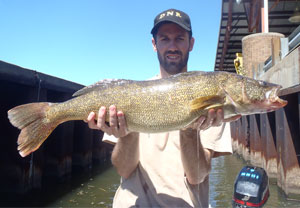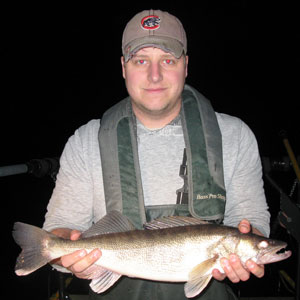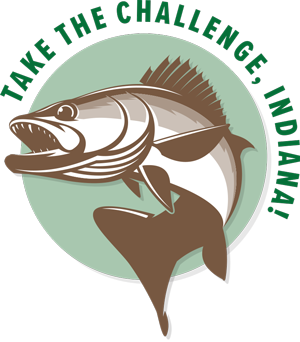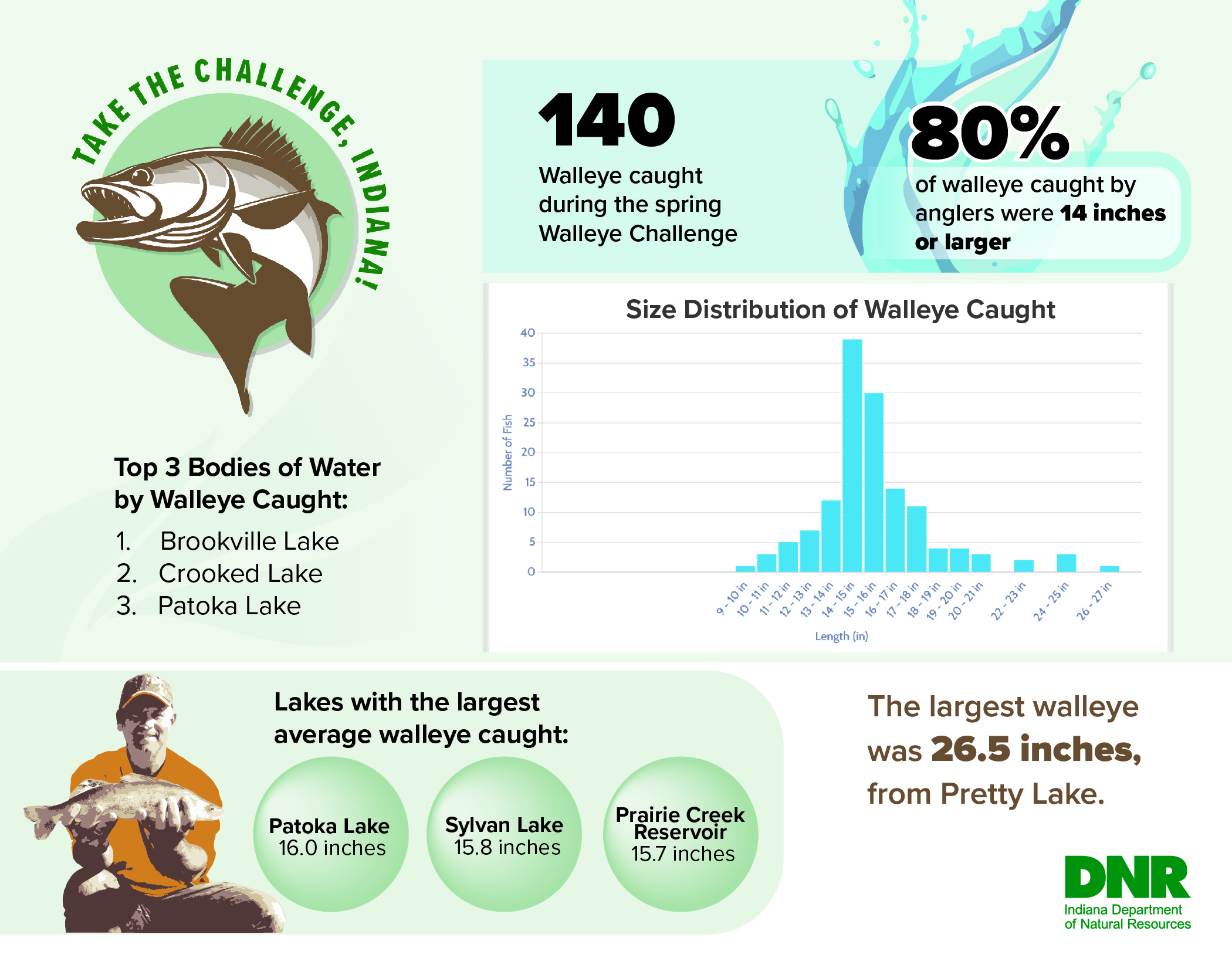Walleye (Sander vitreus) is a member of the perch family. Mostly olive or gold in color, they are found in several lakes, reservoirs and rivers in Indiana. Stocking of walleye in Indiana waters takes place annually.
The Midwest Walleye Challenge, an online fishing tournament for walleye, sauger and saugeye, runs from April 1 to June 29. Learn how to enter.
Fishing & Management
- Walleye Fishing Techniques

Walleye are fish-eaters, preferring deeper waters of lakes and large rivers, moving to shallow flats to feed during darker hours.
Lake or Reservoir Walleye Fishing
- Fishing shad imitation or chartreuse colored crank baits along shorelines and points during low-light and dark hours, similar to bass fishing, can produce excellent walleye action.
- Get your lure close to the bottom. You can get by with 6- to 8-lb test line, but many anglers prefer 10- to 12-lb test line.
- Use crank baits to troll. Trolling is one of the best ways to cover large areas of water in search of walleyes. Since walleyes school together, you can generally catch several fish in the same area once you locate a group.
- Use lead-head jigs, fished with or without bait, to work potential areas thoroughly.
The large, opaque eyes of a walleye are efficient at gathering light. They tend to retreat to deep, dark water during the day and move into shallower areas (5-10 ft.) to feed at night. Walleye tend to prefer rock or gravel bottoms, drop off areas and points. Standing timber areas in reservoirs can be a good place to fish for walleye in midsummer.

River and Tailwater Walleye Fishing
- Crank baits and jigs with twister tails can be successful walleye lures in rivers.
- A hook with a night crawler or minnow suspended below a float and drifted in the current can be productive.
- Concentrate your efforts in slack water areas. Walleye will often feed right on the edge between slow water and swift current.
Walleye fishing in tailwaters depends greatly on the discharge from dams, but fishing can be excellent from March through May. When flows from the reservoirs are high, fish migrate upstream toward the dam. Some walleye are also flushed from the reservoir and hang below the dam. Reservoir tailwaters provide ample shore-fishing areas.
- Indiana Walleye Waters
- Walleye Management & Research
Midwest Walleye Challenge

The Midwest Walleye Challenge, an online fishing tournament for walleye, sauger, and saugeye, runs from April 1 to June 29, 2025. The tournament will be managed through the Angler’s Atlas website and the mobile app MyCatch.
This event is part of a multi-state research project to assess the walleye fishery across the Midwest. It is a citizen science event, so reporting all catches is important. Doing so ensures the data collected are representative of your actual fishing effort and qualifies you for more prizes.

